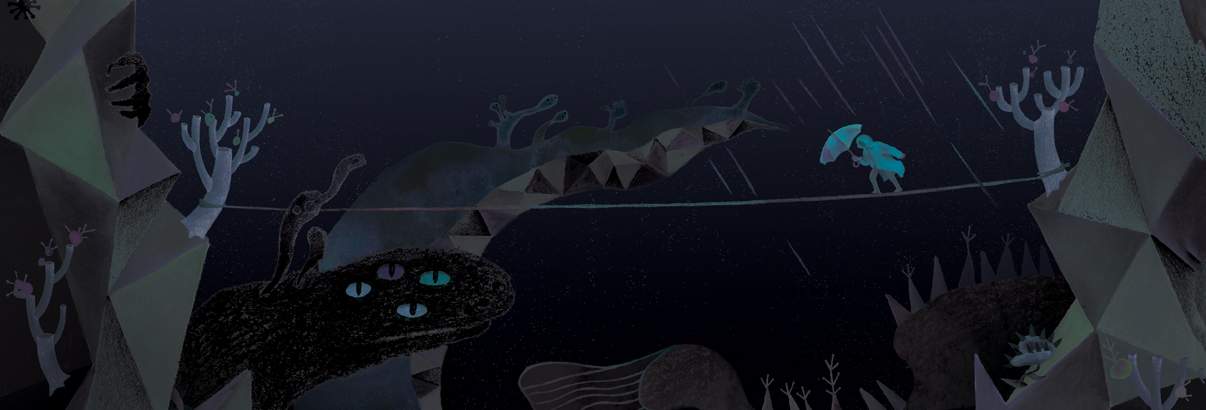Fear is primal. And essential for survival. It’s highly energetic, and even exhilarating. Lots of people love horror movies, and kids (young and old) get a huge kick out of scaring each other. But fear is no joke. It can be a highly aroused state that overtakes us in response to a perceived threat, causing us to either fight, flee, freeze, or faint. It can be a deeply unpleasant feeling.
As with all emotion, the practice of meditation can stabilize us enough in the midst of fear to help us see more clearly—to distinguish a false threat from a real threat that needs to be acted upon. The type of fear meditation can have the most effect on is the fear (and fears) that we continually generate in our own minds, the product of our rich imagination and our desire to control everything, rather than be tossed around in the risky and stormy world.
As our fear rises, we can start yammering in our heads to reinforce the size and shape of the threat: “They’re not going to like me… they’ll think I’m stupid…I’ll never get another job…I’ll lose my mind…and all my friends… and my apartment…” By now, our palms are sweaty and we’re in a total panic.
The very intense energy of fear, when we’re able to let it dissipate, can become a powerful driving force.
The good news: This is all natural. The very intense energy of fear, when we’re able to let it dissipate, can become a powerful driving force. It’s nothing other than the energy of life.
Practice: Name The Fear
Being able to recognize that fear is present can be hugely important in not allowing it to control you.
As you notice your heart pumping more, your chest tightening, your back stiffening, let an imaginary alarm bell go off in your head.
Take 3 or 10 or 20 deep breaths, however many you need to slow your body down. Place your hand on your heart if that will help.
Acknowledge to yourself, “I’m scared. I’m afraid.” Name the fear so you automatically create a bit of distance between yourself and the intensity of the emotional reaction.
Say a few phrases of well-wishing toward yourself and for others:
May (I/others) see the source of our fear.
May (I/others) be safe and free from fear.
May (I/others) be happy and at ease.
Practice: Lean in to Fear
Whenever you feel the energy of fear, don’t avoid the feeling. Sit with it.
As fearful thoughts of dread and worry continue to arise, approach them with friendliness. Don’t treat them as a threat.
Be kind toward yourself for being afraid. See what happens when you hold your ground and let the fear rise in your mind. You may find confidence within.
more in this series
Getting Started: Emotions was compiled by Barry Boyce, editor-in-chief of Mindful, in consultation with:
Jeffrey Brantley, MD, director of the MBSR program at Duke University’s Center for Integrative Medicine. Author of Calming Your Angry Mind.
Vinny Ferraro, meditation teacher and senior trainer, Mindful Schools.
Stefanie Goldstein, Ph.D., clinical psychologist and co-author of the audio program: Mindful Solutions for Addiction and Relapse Prevention.
Christa Turksma, child-clinical psychologist and specialist in developing mindfulness for teachers and families.
This article also appeared in the June 2014 issue of Mindful magazine.
read more
Face Fear and Keep Going
Fear, while critically necessary for life itself, can be horrifying and crippling. It can also eat away at us day in and day out. And yet, welcoming our fear turns out to be the best way to conquer it. Over and over again.
Read More
Transform Your Fears Mindfully
The only way through your fears is to get comfortable being uncomfortable.
Read More










